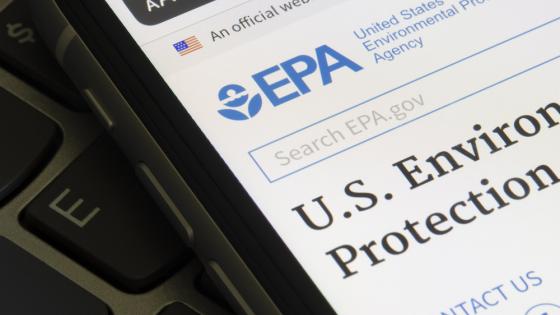Socially responsible investors (SRIs) are institutional investors that supposedly prioritise sustainability goals when making their investment decisions. Significant amounts of capital have been allocated to SRI funds in recent years, and a variety of evidence, including experimental and survey evidence (Riedl and Smeets 2017, Bauer et al. 2021), suggests that individual investors ‘put a positive value’ on sustainability goals (Hartzmark and Sussman 2019).1
However, whether SRIs have any impact on the environmental, social, and governance (ESG) policies of portfolio firms has become a much-debated issue. Both academics and practitioners have raised concern that a ‘green’ posture enables fund managers to attract funds and benefit from higher fees associated with ESG-oriented funds; however, investments by these funds do not deliver anything tangible either in terms of higher returns to investors or better ESG performance by the portfolio firms. For example, a stream of recent research suggests that the environmental impact of SRI investments do not reflect their publicly disclosed purposes (Gibson Brandon et al. 2021, Heath et al. 2021, Liang et al. 2021, Elmalt et al. 2021). However, other research suggests that SRIs engage with portfolio firms and influence their ESG performance (Dyck et al. 2019, Dimson et al. 2015, Dimson et al. 2021, Naaraayanan et al. 2021).
The spillover effects of the US EPA’s enforcement actions and socially responsible investors
In a recent paper (Dasgupta et al. 2021), we find that socially responsible mutual funds (SRMFs) amplify the positive externalities (‘spillover effects’) of enforcement actions by the US Environmental Protection Agency (EPA). We provide a variety of evidence indicating that SRMFs engage with their portfolio firms to mitigate regulatory risk following an EPA enforcement action on a nearby facility of another firm. These results are consistent with the survey evidence in Krueger et al. (2020), who find that institutional investors believe that (1) climate risks have financial implications for their portfolio firms, and (2) engagement to be an effective way to manage these risks. Notably, our results pertain to US-based SRMFs, which some studies have particularly pointed to as not delivering on their stated ESG goals (i.e. engaging in ‘greenwashing’).2
In the US, the EPA is the primary body responsible for setting up the regulatory framework for environmental monitoring under various statutes such as the Clean Air Act and the Clean Water Act. Along with inspections and enforcements under various Acts by the states’ departments of environment and local authorities, the EPA conducts its own inspections (especially when the local efforts are deemed inadequate and the potential for harm is especially high) and imposes penalties of its own on the violators. Penalties include administrative, civil, as well as criminal penalties.
We show that a local enforcement action by the EPA on a particular manufacturing facility (the ‘target plant’; see the red circle in Figure 1) has (negative) spillover effects on the toxic emissions by nearby plants (within 100 miles of the target plant; see the blue circle in Figure 1) belonging to other firms operating in the same industry. Specifically, compared to a control group of plants, these nearby peer plants significantly reduce their own emissions, suggesting that there is some ‘compliance slack’ as far as these local plants are concerned. The effect is economically significant, equivalent to a reduction from the 60th percentile of the distribution of emissions in the entire sample to the median. However, the emissions reduction is twice as large for a peer plant if an SRMF is located nearby (within 100 miles of both the peer plants and the target plant; see the dark green circle Figure 1) and owns shares of the parent firm of that plant.
Figure 1 Peer and control plants, and close and distant SRMFs
We suggest that this finding is preliminary evidence that the EPA enforcement action alerts the local SRMF that local peer plants face a higher likelihood of inspection by the EPA (we indeed find that the incidence of inspections of peer plants increases after the enforcement action). Concerned about the possibility that non-compliance might be detected if an inspection occurs, a local SRMF is likely to engage with management (either at the plant level or at the firm level) to reduce emissions by the local plant. Such engagement is consistent with SRIs’ incentives to maintain an ESG-oriented profile in order to attract funds.
We find that the emissions reduction is insignificant for more distant same-industry plants, consistent with the idea that the increased likelihood of a local inspection drives the spillover reductions. More importantly, we find that the amplification effect due to the ownership of a peer plant by an SRMF weakens as the distance of the SRMF’s location from that of the peer plant increases (see the light green circle in Figure 1). This result is worth emphasising for two reasons. First, it suggests that the local SRMFs may have private information about compliance levels of plants they are located closer to, and only engage with the firm/plant when the regulatory risk increases. Second, the result rules out a ‘self-reaction’ explanation on part of the local plants/firms.
This issue arises because our classification of mutual funds as ‘socially responsible’ is based on the average environmental scores of the portfolio firms – only those with portfolio environmental scores above the median (or some alternative cut-offs) are considered socially responsible. Hence, by construction, the portfolio firms of the SRMFs have, on average, better-than-average environmental footprints, and they might be responding in a socially responsible manner to the enforcement action on one of the firms in the same industry, without any nudge from the SRMF.
However, if this were the case, we would not expect the emissions reduction by the peer plant to weaken and disappear as the closest SRMF is farther away from the peer plant. We do a careful matching exercise based on portfolio environmental scores of near and distant SRMFs to further rule out this possibility.
It is also important to note that the results discussed above for close SRMFs (as well as the other results discussed below) do not hold for close non-SRMFS, i.e. mutual funds located close to the peer plants and owning shares in the parent firm of the peer plant, but not classified as ‘socially responsible’ according to our criteria. This result is reassuring because proximity of a peer plant to an SRMF could be associated with proximity to major population centres, and there could therefore be other channels at work that could amplify the negative spillover effect. However, since the same argument also applies to the non-SRMFs, we would expect similar results for the non-SRMFs if these other channels were active.
Regulatory arbitrage and the role of SRMFs
Contrary to the ‘self-response’ idea, we find that the firms owning the peer plants that are exposed to a nearby enforcement action transfer emissions to distant plants. In particular, firms that enjoy a greater degree of operational flexibility reduce emissions at the local plants by transferring emissions to distant plants. Operational flexibility concerns a firm’s ability to respond to shocks to business conditions by making functional changes in the production process, using substitute raw materials, or shifting production between manufacturing plants located in different counties (Slack 1983, Gerwin 1986, Kogut and Kulatilaka 1994, Gu et al. 2018).
There appears to be a strategic element to choosing the distant plants that the emissions are transferred to. We find that if a distant plant is located in a region where the industry of the firm is not among the ones that have experienced significant enforcement action by the EPA in the past five years, it is more likely to be chosen. Moreover, the opportunism by the firms owning the peer plants is not limited to transferring emissions to distant plants. The emissions by the peer plants gradually increase over the longer term, and almost revert back to the pre-enforcement levels over a ten-year period.4
We show that the local presence of an SRMF alleviates such opportunism. In particular, we show that the emission transfers to distant plants by the flexible firms are absent in the presence of a local SRMF owning the firm’s shares. Moreover, the longer-term reversal of the initial response by the peer firms to the enforcement action also does not occur when there is a nearby SRMF.
As evidence of SRMFs’ engagement, we find that the peer plants increase investment in abatement measures when a close SRMF is present within three years of the enforcement action. Distant plants also increase investment in abatement measures over a longer term. This gradual adoption is consistent with the nature of abatement investment, which is costly and takes several years to implement. While local SRMFs influence the peer firm to implement abatement measures at local plants in the short run because these plants face an immediate regulatory risk, it appears that they pursue a comprehensive plan to reduce emissions at distant plants in the longer run.
The threat of exit
Next, we provide evidence that the threat of exit by SRMFs has real consequences for how the local plants respond to the enforcement action. We find that all SRMFs reduce the portfolio weights of firms whose treated plants do not reduce emissions immediately after a local enforcement action (‘non-responding treated plants’), and this effect is larger if the SRMF is located in close proximity (i.e. within 100 miles of the target and treated plants). In contrast, SRMFs increase the portfolio weights in firms whose treated plants reduce emissions after observing an enforcement action against a local peer plant, and again, the effect is larger if the SRMF is located in close proximity.
Conclusion: ‘Joining forces’
The fight against climate change is gradually being waged on several fronts. Regulators, courts, investors, non-governmental organisations, community organisations, and citizens are all joining forces.5 Economic theory does not provide unambiguous answers regarding whether the presence of multiple monitors increases the overall effectiveness of monitoring – in principle, monitoring activity by agents can either be complements or substitutes (Langpap 2007, Goeshl and Jürgens 2012).6 In our paper, we demonstrate that the role of regulators and socially responsible investors has been complementary, even if their objectives are not entirely congruent. Our analysis has implications for where regulators or citizens should focus to maximise their impact on environmental issues.
References
Bauer, R, T Ruof, and P Smeets (2021), “Get real! Individuals prefer more sustainable investment”, Review of Financial Studies, 34: 3976–4043.
Bartram, S M, K Hou, S Kim (2021), “Real effects of climate policy: Financial constraints and spillovers”, SSRN.
Dasgupta, S, T Huynh, Y Xia (2021), “Joining forces: The spillover effects of EPA enforcement actions and the role of socially responsible investors”, CEPR Discussion Paper 16584.
Dimson, E, O Karakaş, X Li (2015), “Active ownership”, Review of Financial Studies 28: 3225–3268.
Dimson, E, O Karakaş, X Li, (2021), “Coordinated engagements”, Working paper.
Di Ubaldo, M, S McGuire, and V Shirodkar (2021), “The joint effect of private and public environmental regulation on emissions”, VoxEU.org, 3 January.
Döttling, R and S Kim (2020), “Sustainability preferences under stress: Mutual fund flows during COVID-19”, VoxEU.org, 19 August.
Dyck, I J, K Lins, L Roth, H Wagner (2019), “Do institutional investors drive corporate social responsibility? International evidence”, Journal of Financial Economics 131: 693–714.
Elmalt, D, D Igan, and D Kirti (2021), “Limits to private climate change mitigation”, CEPR Discussion Paper 16061.
Gerwin, D (1987), “An agenda for research on the flexibility of manufacturing processes”, International Journal of Operations & Production Management 7: 38–49.
Gibson Brandon, R, S Glossner, P Krueger, P Matos, T Steffen (2021), “Do responsible investors invest responsibly?” Working paper.
Goeshl, T and O Jürgens (2012), “Environmental quality and welfare effects of improving the reporting capability of citizen monitoring schemes”, Journal of Regulatory Economics 42(3): 264-286.
Grant, L E, K K Grooms (2017), “Do non-profits encourage environmental compliance?” Journal of the Association of Environmental and Resource Economists 4: S261–S288.
Grant, L, Langpap, C (2019), “Private provision of public goods by environmental groups”, Proceedings of the National Academy of Sciences 116: 5334–5340.
Gu, L, D Hackbarth, T Johnson (2018), “Inflexibility and stock returns”, Review of Financial Studies 31: 278–321.
Hartzmark, S M, Sussman, A B (2019), “Do investors value sustainability? A natural experiment examining ranking and fund flows”, Journal of Finance 74: 2789–2837.
Heath, D, D Macciocchi, R Michaely, M Ringgenberg (2021) “Does socially responsible investment change firm behavior?” Working paper.
Hoberg, G, G Phillips (2016), “Text-based network industries and endogenous product differentiation”, Journal of Political Economy 124: 1423–1465.
Kim, I, H Wan, B Wang, T Yang (2019), “Institutional investors and corporate environmental, social, and governance policies: Evidence from toxics release data”, Management Science 65: 4901–4926.
Kogut, B, N Kulatilaka (1994), “Operating flexibility, global manufacturing, and the option value of a multinational network”, Management Science 40: 123–139.
Krueger, P, Z Sautner, L T Starks (2020), “The importance of climate risks for institutional investors”, Review of Financial Studies 33: 1067–1111.
Langpap, C (2007), “Pollution abatement with limited enforcement power and citizen suits”, Journal of Regulatory Economics 31: 57–81.
Liang, H, L Sun, M Teo (2021), “Greenwashing”, working paper.
Naaraayanan, S L, K Sachdeva, V Sharma (2021), “The real effects of environmental activist investing”, working paper.
Riedl, A and P Smeets (2017), “Why do investors hold socially responsible mutual funds?” Journal of Finance 72 (6): 2505-2550.
Slack, N (1983), “Flexibility as a manufacturing objective”, International Journal of Operations & Production Management 3: 4–13.
Xu, Q and T Kim (2021), “Financial constraints and corporate environmental policies”, Review of Financial Studies (forthcoming).
Endnotes
1 However, Döttling and Kim (2020) show that funds with higher sustainability ratings experienced sharper declines in flows during the COVID-19 pandemic, suggesting the fragility of the socially responsible investment market.
2 See Kim et al. (2019) for related research on the role of institutional investors and emissions.
3 To be precise, the nearby peer plants (the ‘treated’ group) are those from the same 3-digit industry classification and within 100 miles of the target firm. The control group comprises plants from the corresponding coarser 2-digit industry, irrespective of their distance from the target firm. The industry classifications follow the Text-based Network Industry Classifications (TNIC) by Hoberg and Phillips (2016). The regressions are conducted in the “stacked difference-in-differences” setup, with cohorts formed based on the enforcement events, and using county×cohort, year×cohort, and plant×cohort fixed effects.
4 Bartram et al. (2021) and Xu and Kim (2021) demonstrate the role of financial flexibility in the transfer of emissions and emission reduction.
5 See Grant and Grooms (2017) and Grant and Langpap (2019).
6 Di Ubaldo et al. (2021) study how emissions are affected by the interactions of private and public regulation.







